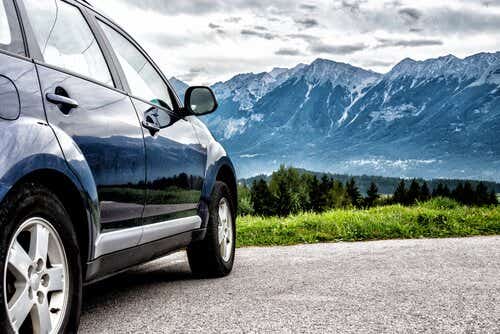What are car insurance groups?
Insurers put UK cars into different groups based on how much they cost to insure. There are 50 groups in total, and the lower the number of the group your car is in, the less your premiums should be.
Bear in mind, though, that your vehicle’s insurance group isn’t the only factor that affects the price you pay for cover.
For example, your age, where you live, your job title and your driving record are also important when insurers set premiums.
How do car insurance groups work?
When you compare car insurance quotes, insurance companies will use your registration details to check what group your car is in. Cars are put into groups based on a number of factors, including:
- Your car’s value, or how much it would cost to replace if it was written off or stolen. The higher the value, the higher the group.
- Typical repair costs for this type of car. Some cars require hard-to-get parts or specialist labour.
- How powerful it is. The faster your vehicle can accelerate and the higher its top speed, the greater the risk of it being involved in an accident.
- Its safety and security features. ABS brakes, for example, could mean a lower risk of accidents, while an immobiliser cuts the chances of the car being stolen.
Car insurance groups are set by a panel of insurance industry experts known as the Group Rating Panel based on the factors listed above.
Cars with the lowest insurance group
Cars in the lowest insurance groups are the cheapest to insure. Vehicles in group 1 are those that don’t cost much to buy and which aren’t very powerful. Some models of Fiat Panda can be found in group 1, as well as some Vauxhall Corsas and Citroen C1s.
Bear in mind that different models of the same car can be found in different groups. This is because variations in their specifications, such as engine size or cost, may make them more or less expensive to insure.
Group 2 cars include the Ford Ka, the Kia Picanto and the Toyota Yaris.
In group 5, you’ll find the Ford Fiesta, the Peugeot 207 and the Renault Clio. And in group 10, there are smaller family cars like the SEAT Ibiza, the Nissan Juke and the Dacia Sandero.
Compare car insurance quotes
See a range of car insurance quotes in just a few minutes when you compare with Uswitch
What do the letters on my car insurance group mean?
In some cases, when you check your car insurance group you will see a letter next to the number, for example 15A instead of just 15.
These letters are mostly linked to the car’s safety rating. Here’s what these letters mean:
A: this stands for acceptable.
D: this means ‘does not meet’ safety requirements, which will normally put it into a higher group.
E: this means the car exceeds requirements, so qualifies for a lower group.
P: this means the rating is provisional and is in the process of being finalised.
U: this stands for ‘unacceptable’. You may need to make safety improvements to get insurance.
G: this is an imported car and can’t be properly rated under the UK system.
How do I check what insurance group my car is in?
There are a number of online car insurance group checkers that can help you find out your group.
Either type in your registration number, or input your car’s details including the make, model, year and any other specifications.
What insurance group is good for young drivers?
Young driver car insurance is usually much more expensive than for other age groups. This is because insurers see them as a greater risk due to their lack of experience and higher likelihood of being involved in accidents.
This means it can be a good idea for young drivers to look for cars in the lower groups, especially in group 1.
Electric cars and insurance groups
Electric and hybrid cars are also covered by the 50 car insurance groups in the UK. Electric cars can often end up in higher insurance groups, making them more expensive to insure.
This is due to their purchase costs as well, as the fact they often have more expensive parts and higher repair costs.
What else affects car insurance?
Aside from your car’s insurance group, insurers take a number of other factors into account when they set your premiums. These include:
- Your age: younger drivers usually pay more, while those getting car insurance over 60 typically have the lowest premiums.
- Where you live: some postcodes represent a higher risk of theft, and if you live in a busy city, you could be more likely to be involved in an accident.
- Your driving and claims history: if you have points on your licence for speeding, for example, the cost of cover will usually rise. And if you’ve made claims on your policy in recent years, this will erode your no-claims bonus.
- Your annual mileage: the more you use your car, the more likely you are to make a claim.
- Your excess: the more you’re willing to contribute to the cost of any claim, the lower the cost of cover. But it's important that you chose an affordable amount,as you would need to pay this in the event of a claim.




